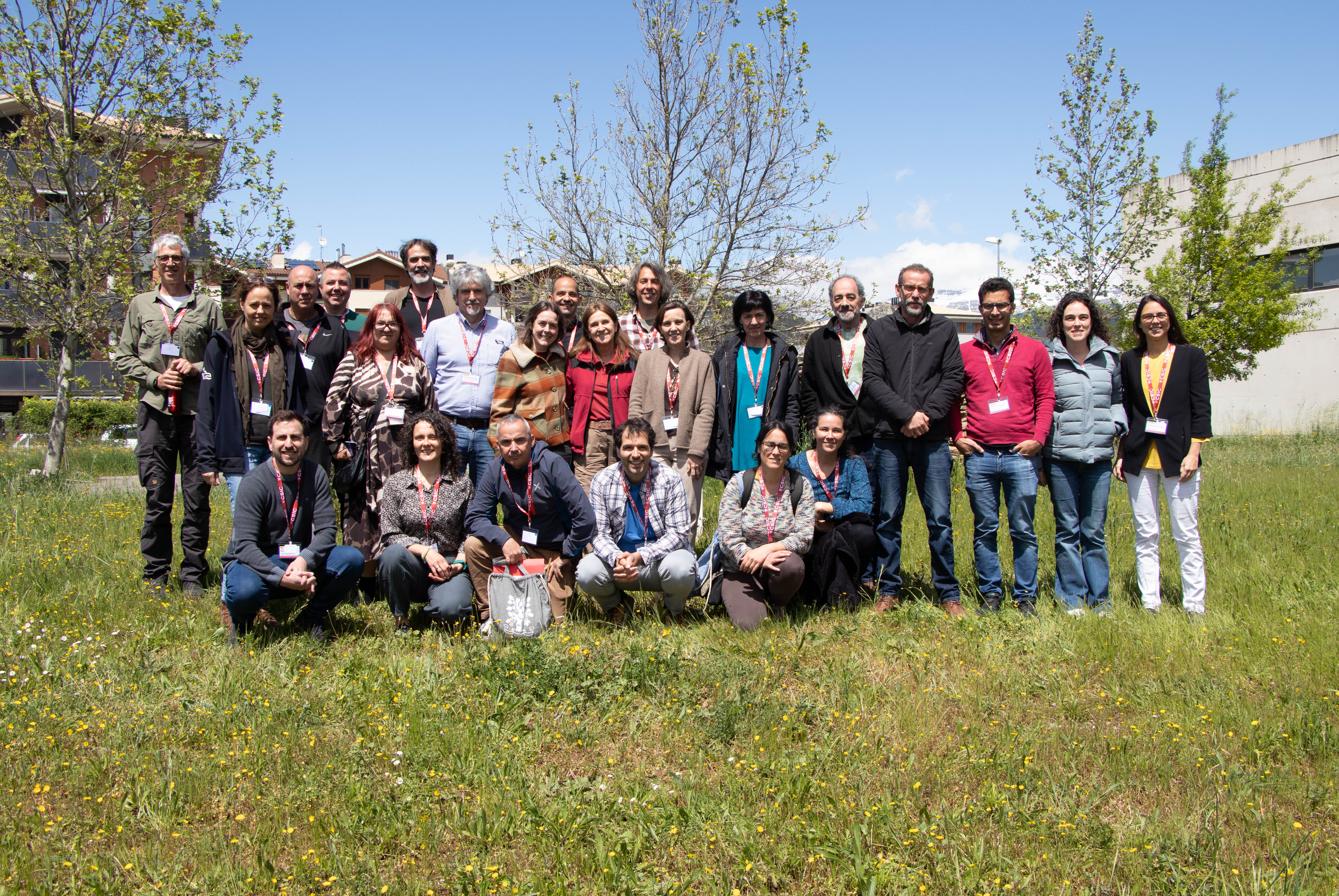The CSIC brings together researchers and regional stakeholders in Jaca to highlight the potential of science in nature restoration
The event, held at the Pyrenean Institute of Ecology (IPE-CSIC) in the Aragonese city of Jaca, provided a forum for dialogue between researchers, policymakers, and society to address ecosystem conservation challenges through scientific knowledge.

Researchers from the Spanish National Research Council (CSIC), specializing in terrestrial and aquatic ecology, presented the institution’s efforts to tackle the challenge of conserving and restoring nature in a rapidly changing society. The event was part of the ‘CICERÓN Itineraries’ program and brought together CSIC scientists with representatives from public administrations, businesses, media, and civil society organizations. Also in attendance were Ana Castro Morera, CSIC’s Deputy Vice President for Innovation and Knowledge Transfer; Mª Jesús Lázaro, CSIC’s institutional delegate in Aragon; and Juan José Jiménez, Director of the Pyrenean Institute of Ecology (IPE-CSIC), headquartered in Jaca.
Beyond encouraging dialogue on conservation and ecological restoration, the event served as a platform to showcase the potential of public science to deliver rigorous knowledge, tools, and actionable proposals to tackle today’s environmental challenges across various sectors. “CSIC science is ready to support decision-making, but for that to happen, we need spaces like this one, where science can be heard, questioned, and adapted to local realities,” Castro emphasized. “These kinds of encounters have been crucial in allowing science to go further: when it is shared with those who make decisions, manage resources, and communicate with the public, it becomes a transformative force,” she added.
A dynamic format to foster connection
The event combined a guided tour of the IPE-CSIC scientific facilities—including its herbarium and laboratories—with a video session and participatory discussion. Seven short films featuring CSIC researchers were screened, presenting real-world examples of ecological restoration in diverse environments, from marine habitats to agroecosystems and high mountain lakes.
The meeting was coordinated by Graciela Gil-Romera (IPE-CSIC) and Óscar Godoy (Doñana Biological Station, EBD-CSIC), who also moderated the discussion. “We wanted to show that restoring nature is not only an ecological imperative, but also an opportunity for collaboration between science and society. This event was an invitation to explore what public research can offer to those who manage or transform the land,” said Gil-Romera. Godoy added, “Restoration will only be effective if it’s based on solid knowledge. But that knowledge must leave the lab and be shared and discussed with those working on the ground. That’s what we’ve aimed to do here.”
Applied science across diverse ecosystems
The scientific presentations offered a broad and complementary perspective on how to approach ecological conservation and restoration from multiple ecosystems and disciplines. For instance, Jordi Pagès Fauria (Center for Advanced Studies of Blanes, CEAB-CSIC) pointed out that in coastal systems, “restoration requires understanding both ecological processes and social dynamics, as only then can resilient management strategies be designed in the face of global change.”
Also in the marine realm, microplastics expert Cristina Romera (Institute of Marine Sciences, ICM-CSIC) noted that microplastics “are disrupting the carbon cycle in the ocean, and we are exploring scientific strategies to counter these effects, even through biological processes.”
Laetitia Navarro (EBD-CSIC) shared that “to successfully carry out a restoration project, we first need to determine what we’re aiming to restore, and for that we need to recover a historical perspective.” Similarly, Miguel Clavero (EBD-CSIC) described his research efforts to compile biodiversity and distribution data spanning hundreds of years, often sourced from historical archives.
Teresa Buchaca (CEAB-CSIC) emphasized that high mountain lakes are “natural laboratories for observing the impacts of human activities,” and that restoring them “requires returning their ecological functionality.” Meanwhile, Bruno Moreira (Desertification Research Center, CIDE–University of Valencia–Government of Valencia–CSIC) reflected on the role of fire: “Understanding fire dynamics in Mediterranean ecosystems is key. Prescribed burns can be powerful tools if applied with ecological criteria.”
Daniel Oro (CEAB-CSIC) reminded attendees that wildlife populations “need space and time to recover. Restoration also means restoring ecological connectivity and natural cycles.” Finally, María R. Felipe-Lucia (IPE-CSIC) stressed that ecological restoration “must go hand in hand with environmental justice. The benefits of ecosystems must be distributed fairly among all territorial stakeholders.”
Institutional and local engagement
The event brought together a wide range of local stakeholders, including representatives from the Ordesa and Monte Perdido National Park (Government of Aragon), the Flora and Fauna Service of the Government of Catalonia, and the Aragon Nature Protection Council. Civil society organizations such as the Aragón Shepherds’ School, Justicia Alimentaria, and the Garúa cooperative were also present. Participating companies included Agresta S. Coop. and Paleoymás, alongside architecture studios such as Gyra Architects. The media was represented by outlets like Aragón Radio, Ballena Blanca, and El País, helping to extend the scientific discussion to a broader public audience.
These CICERÓN Itineraries are the second to be held at a CSIC center in Aragon and have been supported by the regional CSIC Delegation.